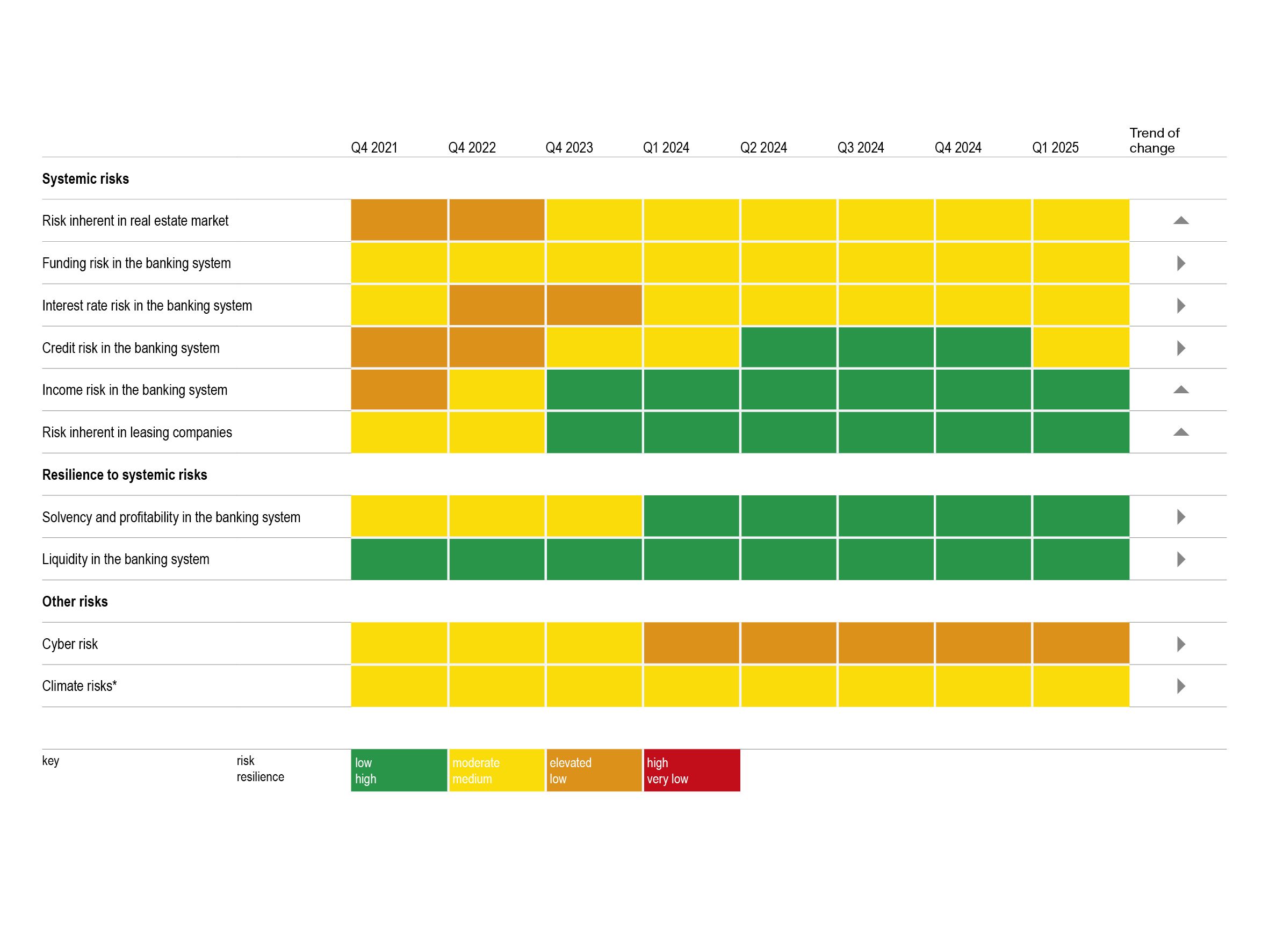A major feature of the second half of last year was rising geopolitical tensions, which have strengthened even further this year in the wake of the US’s new economic and tariff policy measures. The uncertainty is also having an impact on economic activity in the euro area, where performance is sluggish. Meanwhile the performance of the Slovenian economy remains generally favourable.
Banka Slovenije’s assessment is that under these circumstances the general level of risks to financial stability has risen slightly this year after several quarters of stability, while the banks’ resilience to systemic risks remains high. In these circumstances our macroprudential policy remains in a preventive stance, and focuses on maintaining the banking system’s resilience to domestic and external shocks.
The systemic risks to the stability of the Slovenian financial system, where last year the banking system again saw record profits, remain low to moderate. A number of risks were however assessed as having seen a downgrade in their outlook.
The increased uncertainty in the macroeconomic environment is being reflected in particular in credit risk, whose assessment for the first quarter of 2025 was therefore raised to moderate with a stable outlook. There has been a discernible downturn in the performance of non-financial corporations, particularly in manufacturing. The stock of non-performing consumer loans is also increasing, although the NPE ratio remains stable thanks to the high lending activity in this segment.
The risk inherent in the real estate market continues to be assessed as moderate, with the possibility of an increase in the future. The supply of residential real estate has long trailed demand, which amid falling interest rates on housing loans is driving a continued rise in residential real estate prices, even as the number of sales falls. In the future this might also lead to a rise in the risk inherent in leasing companies.
Income risk continues to be assessed as low for now, but our expectation is that it will strengthen over the course of the year, as the fall in interest rates in 2024 and 2025 is bringing an end to the period of extremely high income in the banking system.
The remaining assessments of risk and resilience remain unchanged, with a stable outlook. Funding risk in the banking system was assessed as moderate with a stable outlook. Deposits by the non-banking sector remain the most important and stable source of funding for Slovenian banks. Interest rate risk also remains moderate and stable, with changes in loans and deposits only having a minor impact on the banks’ interest sensitivity. The potential rise in cyber threats meant that the assessment of cyber risk was held at elevated with a stable trend, while the assessment of climate risks was held at moderate.
Resilience of the banking system
The assessment of the resilience of the banking system from the perspective of solvency and profitability remains high. Our expectation is for a further strengthening of regulatory capital via retained earnings from 2024, which over the course of 2025 could also be reflected in the total capital ratio. As an extremely favourable period for generating high profits in banking comes to an end, our expectation is that rising operating costs and additional impairments will also drive a gradual decline in profit, alongside falling interest rates. The assessment of resilience in the segment of liquidity also remains high and stable.
Preventive stance of macroprudential policy
Banka Slovenije is responding to the described risks through its macroprudential policy measures, which aim to strengthen the resilience of the banking system and the economy to external and domestic financial shocks. In light of the situation, the preventive stance of macroprudential policy was retained last year. Currently there are four macroprudential instruments that apply to the Slovenian banking system, which focus on requiring a higher level of capital at banks, on ensuring minimum credit standards, and on preventing excessive credit growth in the area of consumer lending.
Figure: Banka Slovenije’s risk and resilience dashboard for the Slovenian financial system
Note: The colour code in the risk and resilience dashboard relates to the assessment for up to one quarter in advance. The arrow illustrates the expected change in risk or resilience in the scale (up or down) over a slightly longer horizon of around one year. For risks, an up arrow means an increase in risk, and vice-versa, while for resilience it means strengthening, and vice-versa. The risk and resilience dashboard is based on analysis of key risks and resilience in the Slovenian banking system, and is defined as the set of quantitative and qualitative indicators for defining and measuring systemic risks and resilience.
Source: Banka Slovenije

